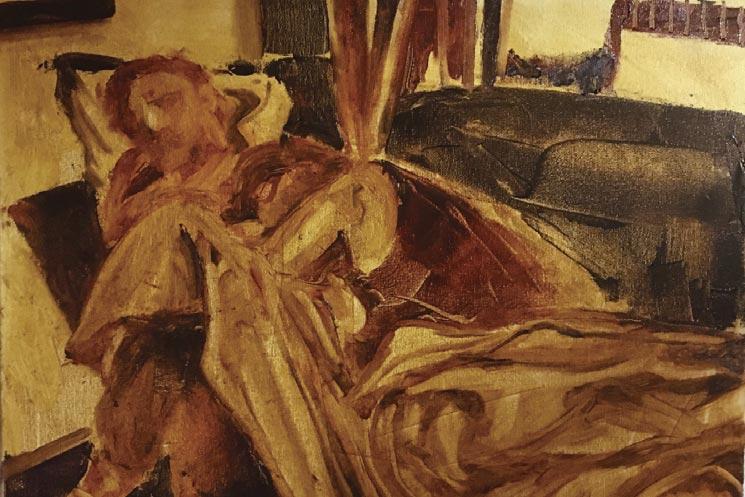
4 minute read
Medicine By John J. Seidenfeld, MD
Art in Medicine*; Interprofessional Education (IPE) at University of the Incarnate Word, School of Osteopathic Medicine (UIWSOM)
By John J. Seidenfeld, MD
Advertisement
Doctors, nurses and pharmacists as well as many other medical professionals interact in and outside of healthcare facilities on a regular basis. Most of these interactions are focused on patient care and many are stressful and provoke anxiety. Interprofessional education is aimed at interactions guided by respect, kindness, recognition of the importance of multiple intelligences, teamwork, shared observation and shared decision-making. To train for these interactions and to build this environment, the UIWSOM has partnered with the McNay Art Museum.
We work with our partners to engage in the discovery and enjoyment
of visual arts to experience a transformation where all participants interact to share observations, listen to one another, and gain collegial interactions in a less stressful environment aimed at advancing interactive skills, diversity, equity and inclusion. The McNay Museum set in a landscaped architectural haven is a San Antonio gem described as; “Since Mrs. McNay’s original bequest in 1950, the museum’s collection has expanded to more than 22,000 works including: Medieval and Renaissance art, 19th- through 21st- century European and American paintings, sculptures and photographs, one of the finest collections of prints and drawings in the Southwest, the exceptional Tobin Collection of Theatre Arts, the Jeanne and Irving Mathews Collection of Art Glass, and the Art of New Mexico.” (https://www.mcnayart.org/)
At the McNay Art Museum, learners can make connections with other health professions in the UIW Community. As individuals freed of professional role expectations learners make observations with the familiar and unfamiliar and practice communication skills. After introductions, learners progress through several activities.
In “Creative Connections,” learners are divided into small groups and select a work of art. A picture card guides imagination of the work of art as one of the familiar objects and describes its use, sound and operation. Ideas are shared with the small group and then the larger group.
In “Gallery Observations,” learners engage in close observation of a single object, employ visual thinking strategies in conjunction with discovery-based questioning strategies, draft a list of questions for the subject or artist and discuss ideas with peers. Learners also observe another object nearby and make visual content comparisons between the two objects.
To conclude, learners are asked to write a one-word critique of the experience. The group shows all their words and discusses the experience. Our UIWSOM learners write a one-page reflection on their interactions which is reviewed by the members of the Community Engagement Partnership committee.
During the COVID-19 pandemic these experiences continued in the virtual format. The McNay Art Museum staff facilitated our Interprofessional educational experience, like the in-person event. Learners from the various UIW health professions schools teamed in virtual breakout rooms to analyze artwork and perform group activities, cultivating a strong emphasis on teamwork and networking. One-hour virtual sessions were scheduled throughout the academic year. *(For those who wish to experience the transcendent experience of medicine and art the author suggests the following link:) https://rxmuseum.org/reflections/the-masque
An example of the site offerings is shown in part below with a COVID-19 focus from a work of a previous pandemic.
“Throughout the COVID-19 pandemic, people have been impacted to varying degrees, with certain groups more vulnerable than others (e.g., the poor, the elderly and those without access to healthcare). Compassion can help us understand the suffering of others. As Sandro Galea, MD, writes in The Lancet:
Compassion extends beyond empathy. It does not motivate our action because we may too be harmed. Compassion motivates action because the phenomena we observe are unjust . . . and pushes us to understand how we have structured the world, and to ask how we can structure it better, not because we may suffer but because others are suffering and that is not how the world should be. Would our approach to COVID19 have been different were we accustomed to seeing health through the lens of compassion?
Demuth similarly visualizes the differential impact of pandemics, and the crises of empathy they can engender. How can compassion motivate us to uphold the social contract and support others?”
“Demuth’s Masque of the Red Death performs a number of translations. First, an epidemiological phenomenon is transformed into Poe’s allegorical work of literature; then, nearly a century later, that work of literature becomes a painting. Perhaps furthering this process, a contemporary viewer will doubtlessly translate the painting to their own experience, recognizing its parallel to the current COVID-19 pandemic. The Masque of the Red Death is a visual representation of the ways in which a plague, even if it may appear to not touch certain circles initially, can be an unpredictable equalizer of all human beings. It infiltrates. It spreads, like watercolor across canvas. Similarly, COVID19, which has been taken more lightly by some than others, may ultimately come to affect all of us with as much force and devastation, before it ends. How can representations of pestilence such as The Masque of the Red Death convey the universality of the pandemic experience, no matter how different the context and demographics of those portrayals may be?”
John J. Seidenfeld, MD is the Chair of the BCMS Publications Committee.
Image, facing page: Charles Demuth, The Masque of the Red Death, c. 1918. (Courtesy of Barnes Foundation)










